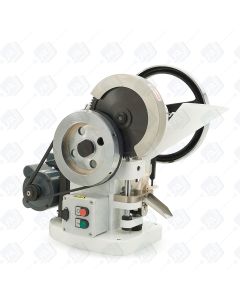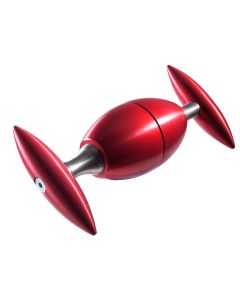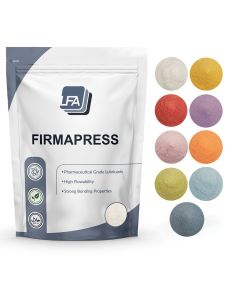Building strength in to your design
The tablet land is the narrow horizontal surface that is perpendicular to the tablet’s periphery or vertical edge, which creates a junction between the edge and the cup of the tablet. There are three main reasons why a land should be incorporated into the design of a tablet:
- To increase the strength of the punch edge
- To reduce the wear of the punch cup inner edges
- To reduce the severity of nicks on the edges of the punch
It may be argued that the land area is beneficial in that it adds durability and strength to the punch tip; conversely some would maintain that the land makes it more difficult to coat the tablet.
The width of the land is dependent upon the following:
- Tip diameter
- Cup depth
- Cup configuration
- Punch steel selection
- Compression force
- Abrasiveness of granulation
punch tips are deeper than the average concave tip and as such are designed with 0.002” to 0.008” (0.05mm to 0.20 mm) land. Special punch tips on the other hand are designed with 0.002” to 0.012” land. In extreme cases, the land width in excess of 0.020” may be employed to add durability and longevity to the punch tip.
As the depth of the cup increases, the slope of the cup at the periphery of the tip also increases. This can lead to the possibility of having a deformed tip or fractured tip edge when heavy compressive forces are applied and when the tip has little or no land. As the punch starts compressing the tablet, stress is placed highest at the tip edge. Compressive stress is distributed as the granulation is forced to the middle of the cup. This distribution of compressive stress passes to the outer edges of the cup face, and is the reason why wear often occurs at the outer edges of the cup face, as the granulated material flows over this area of the cup. By adding land to the design of tablets the possibility of tip deflection is reduced while increasing the durability and strength of the tip edges. It is important to note that the deeper the design of the cup, the wider the land should be to help strengthen the tip.
Punches that are made of high grade stainless steel and used for compressing nutritional supplements require wider land than those made of regular steels as the higher grade stainless steels have low shock resistance. Additionally supplement tablets generally require higher compressive forces to compress than regular pharmaceutical products.
Iscriviti alla nostra newsletter
Even though punches undergo stress tests and are heat treated for optimal wear resistance, care needs to be taken when handling punches, and especially during set up and the production process. If the punch tip accidentally contacts other materials or hard surfaces, significant damage can be caused to the edge of the tip. By including the correct land in the design of punch tips, that possibility is reduced as the land adds strength to the edge of the punch at the edge.
The presence of the land results to a small lip or a ridge around the boundary of the tablet, between the tablet face and side. This edge is often prone to erosion during the tumbling action in a coating pan. The junction of the land and the cup face may also result in a sharp inside corner on this area of the product tablets. To prevent any problems especially during the coating process, it is important that the junction between the land and the cup face should have a very large blend radius. Such a modification will add a curved transition between both surfaces.
In designing specific tablets all of the features such as land area, and curvature of transition between land and cup need to be clearly specified and understood by the tool manufacturer.
Note that the blending of the inner edge of the land area can be achieved either at the outset so that it is incorporated into the punch design, or by simply blending the cup with the land in the final polishing of the punch at the end of the manufacturing process.
In the case of punches designed to produce compound tablets the slope of the cup adjacent to the interior edge of the land is greater than that of single radius cups. This results in a reduction in the allowable force at the tip of the punch. A wider land is therefore usually suggested for compound cups as it helps to maintain the strength of the punch that is weakened by the steep slope of the cup.
It is important that land is regularly inspected, as it is the area of the punch tip that experiences high compressive forces. To extend the longevity of the equipment and maintain tablet quality, it is important to rework the punch cup and re-establish the land at regular intervals.
There are many designs that have evolved to accommodate heavy land to provide strength and longevity to the tablet press equipment (especially in the TDP range). Nutritional supplement manufacturers usually use 0.020’’ wide land to coat tablets. The same width is often used also by those who manufacture generic tablets.
If you have any questions on building strength into your tool design, do contact your tooling vendor and let them guide you through the entire design process to ensure that you achieve a successful tablet design.





